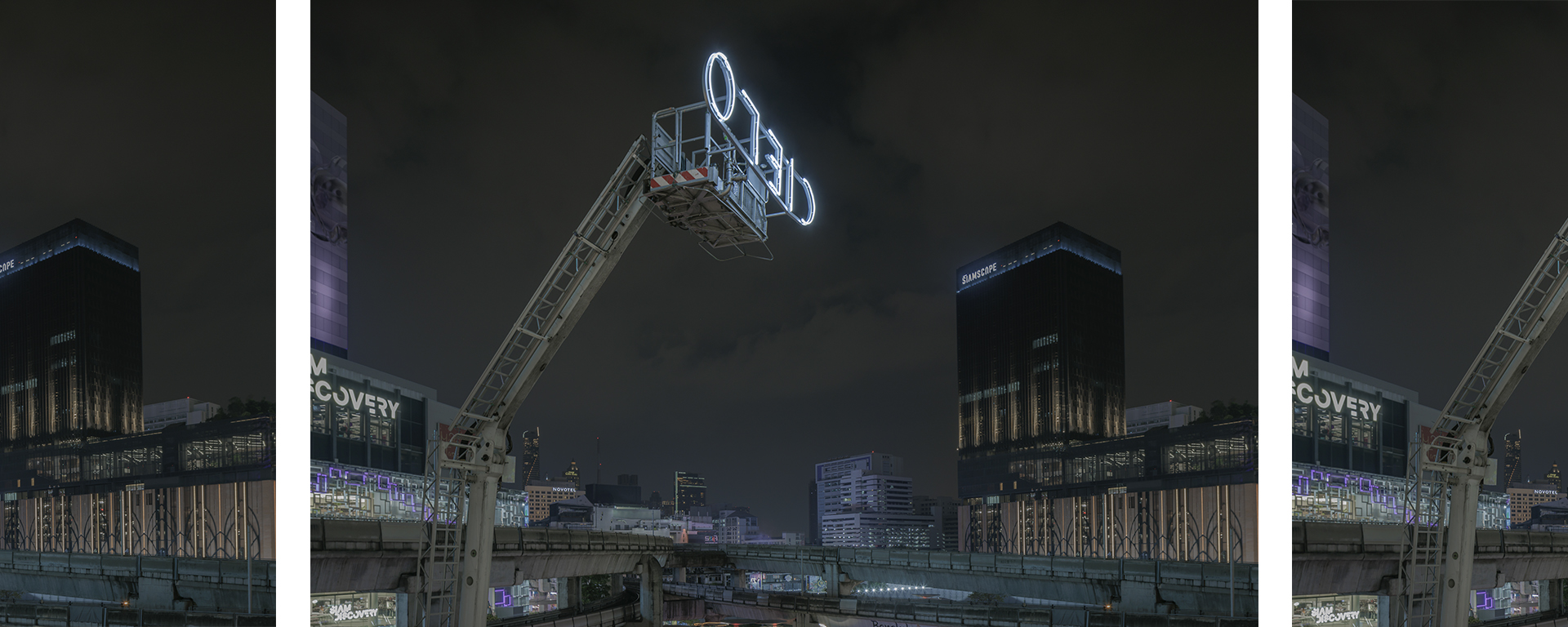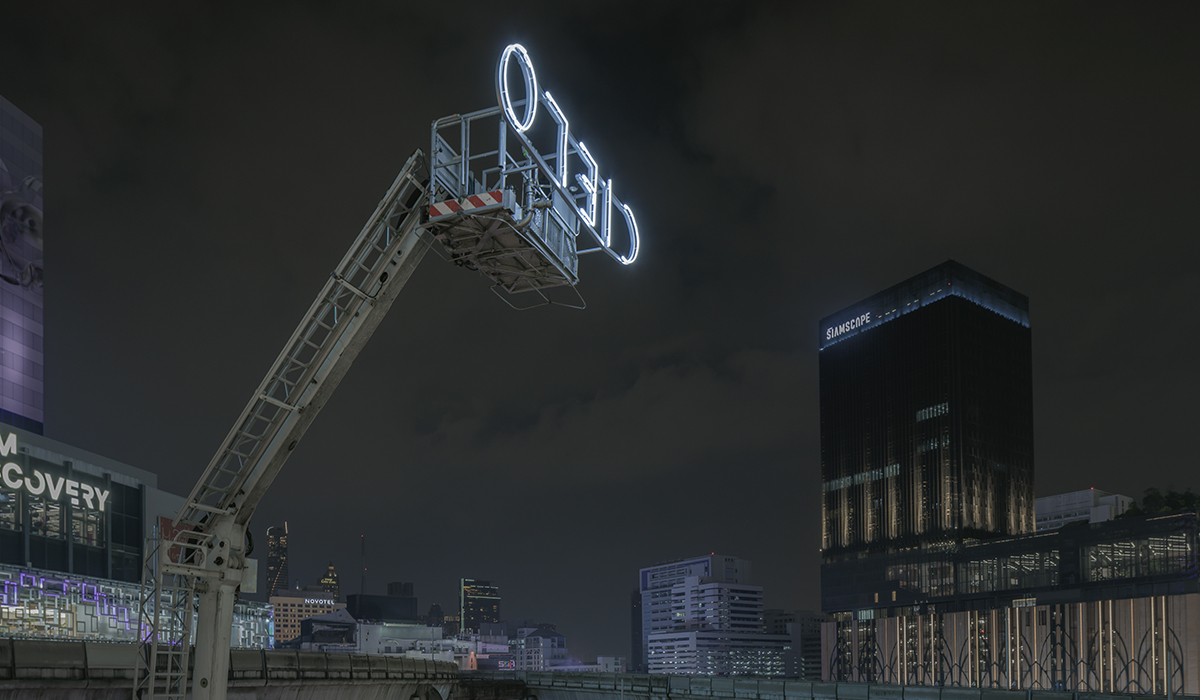

Curated by Diego Sileo
A project specifically designed for PAC and outlining Marcello Maloberti’s entire oeuvre. The exhibition is a dedication to Milan, which becomes the real protagonist of the show. A love declaration that Maloberti makes to the city and its inhabitants, a place full of history that accompanied him in building his career. Through his works, the artist intertwines the key themes of his research, creating continuous connections that help the works to coexist and live with each other. Sacredness and the spiritual element emerge among these themes, a continuous reference to everyday life and the elevation of the written word in the form of poetry. Maloberti relates to PAC using both its external and internal spaces, and creating an installation contrasting with Ignazio Gardella’s modernist aesthetics.
Photo
Marcello Maloberti, CIELO, 2022
Bangkok Art Biennale. Installazione performativa
Fotografia di Soopakorn Srisakul
Courtesy the artist and Bangkok Art Biennale